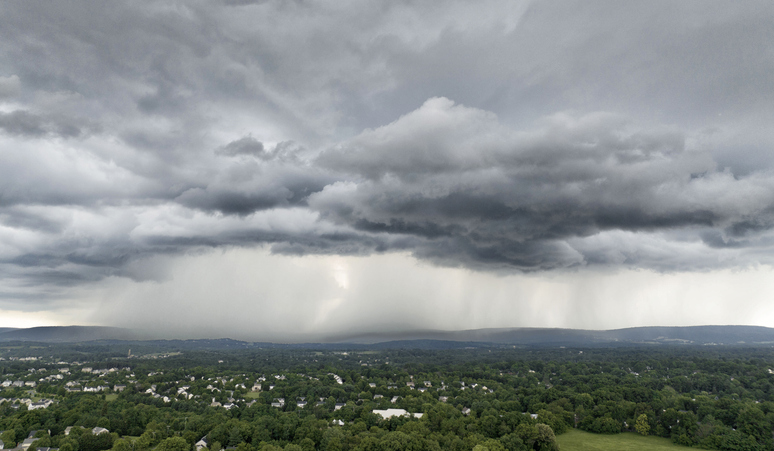Business Risks Related to Severe Convective Storms
Posted May 10, 2024
Severe convective storms can be extremely destructive natural disasters that result in injuries, infrastructure damage and billions of dollars in losses for businesses and their commercial properties. These storms are often accompanied by hail, flooding, strong winds, lightning and abrupt temperature shifts. They are among the costliest types of natural disasters, according to industry research.
To reduce potential losses, companies should understand the risks related to severe convective storms and take appropriate action. This article provides an overview of the different types of convective storms, explains their impact on businesses and outlines steps that organizations can take to address these concerns.
Types of Convective Storms
Convective storms, also known as thunderstorms, form when heat and moisture are vertically transported in the atmosphere. As the rising warm air becomes cooler, water vapor condenses into the water droplets and forms observable clouds. The circuit consisting of rising and falling air is known as a convection cell.
There are several types of convective storms, including the following:
- Single-cell thunderstorms—These events are usually driven by summer afternoon heating; they are small storms that grow and dissipate in around an hour. Such storms typically produce lightning and a period of brief, heavy rain.
- Multicell thunderstorms—These storms occur when updrafts form along the edge of a gust front, which is the leading edge of rain-cooled air. Multicell thunderstorms may last for many hours and produce strong winds, flooding, hail and brief tornadoes. Such events can form in clusters or in a straight line, known as a squall line.
- Supercell thunderstorms—These highly organized storms feed off a rising current of air (i.e., an updraft) that is tilted and rotating. Supercell thunderstorms last more than an hour and often create the most hazardous weather, including the majority of large and violent tornadoes.
In addition to these types of convective storms, a band of rapidly moving showers or thunderstorms can create a derecho, or a widespread, long-lasting windstorm. These events, coupled with straight-line winds, can create damage similar to a tornado.
The Impact of Severe Convective Storms
Severe convective storms can impact businesses in a variety of ways, thus presenting the following risks:
- Employee or third-party injuries—Severe convective storms can pose a threat to employees’ and others’ safety. Depending on the unique nature of such events, these storms can create conditions that lead to severe injuries or death.
- Property damage—Businesses may experience a range of property damage due to hail, rain, strong winds, lightning or other aspects of convective storms. These events can damage or destroy many types of commercial property, including buildings, fixtures, furniture, inventory, equipment, vehicles and other structures.
- Business interruptions and extra expenses—Property damage caused by convective storms can lead to temporary closures or business interruptions that result in lost income. These events can also lead to businesses incurring additional expenses, such as the costs associated with moving to temporary locations while their properties are being repaired.
Actions Businesses Can Take
There are several strategies businesses can implement to help keep their employees safe and reduce the risks related to severe convective storms. Here are some best practices for businesses to keep in mind:
- Assess the risks. It’s essential for businesses to analyze the risks of severe convective storms. Specifically, they should take note of regional weather patterns and consider how these conditions could threaten employee safety and business property.
- Protect property. Prior to the arrival of severe convective storms, businesses can prepare their properties to better withstand adverse weather. For example, installing storm shutters can help prevent window breakage and covering outside objects with tarps can help secure them. Emergency supplies and first-aid kits should also be kept on hand in case employees or clients need to seek shelter on-site.
- Communicate. Businesses should have procedures in place that keep lines of communication intact with employees and clients following severe convective storms. Power outages may occur and cellphones may not be reliable during disasters, so proper communication may require the use of tools that do not utilize those systems (e.g., two-way radios). It’s also important for businesses to communicate with employees regarding when it’s safe to return to work following adverse weather.
- Monitor weather forecasts. Knowing what weather is on the way can help businesses make adequate preparations. It can also provide company leaders with information they can use to make decisions regarding early closures to help keep employees and clients safe.
- Learn from previous experiences. Reviewing previous severe convective storms can help businesses identify aspects of their operations that are at risk. It can also help them learn from those experiences to strengthen their risk management measures.
- Review insurance coverage. Having proper insurance in place can provide essential coverage for businesses. Companies should ensure their policies adequately address the risks that severe convective storms present.
Conclusion
Severe convective storms are a growing threat to businesses. By taking proactive steps and having effective policies and procedures in place, businesses can mitigate their exposures and help keep their employees and clients safe.
Contact us today for more risk management solutions.

